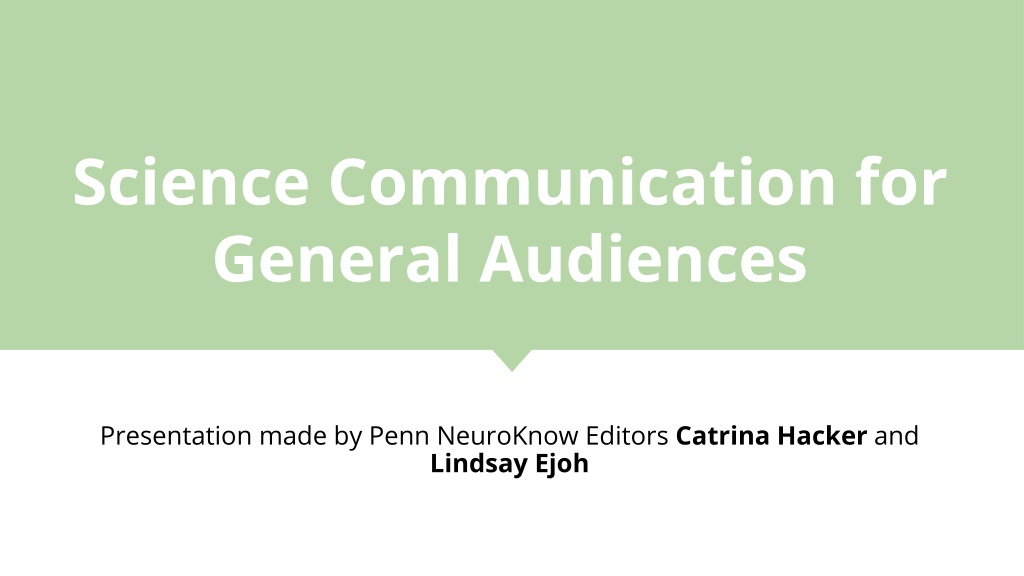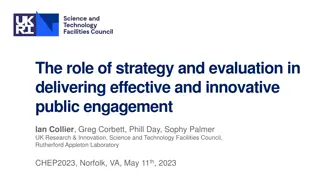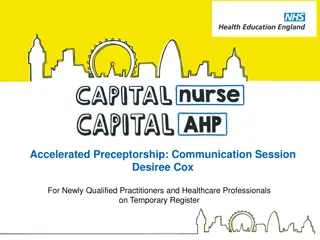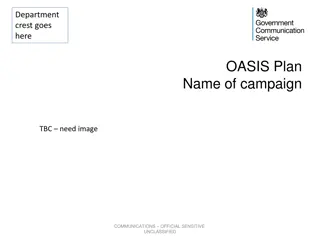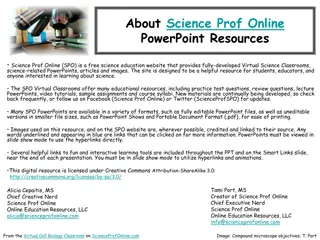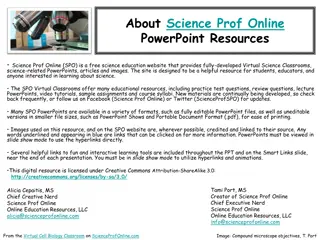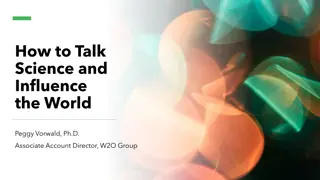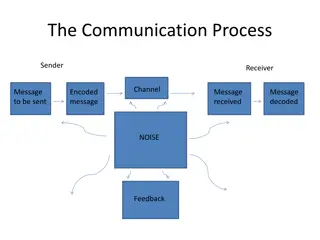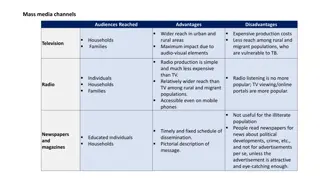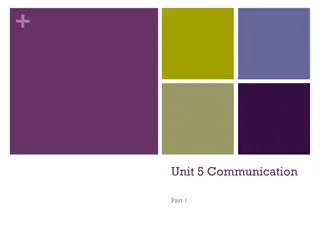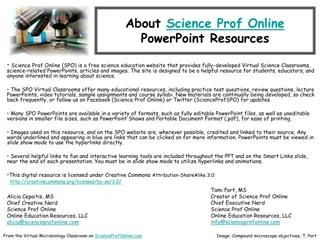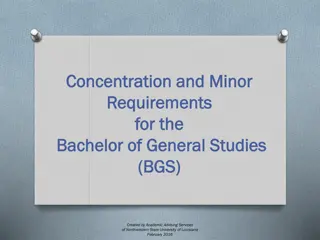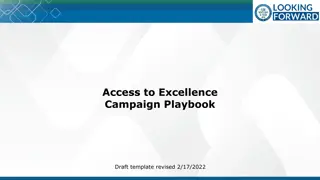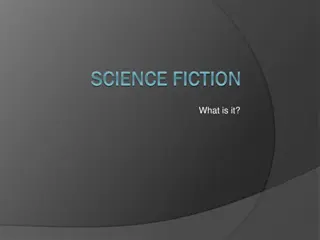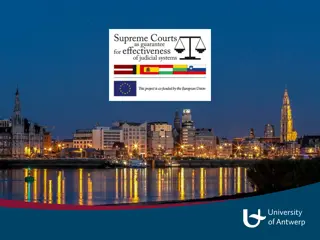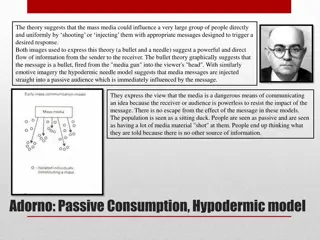Science Communication for General Audiences
Delve into the art of science communication with Catrina Hacker and Lindsay Ejoh from Penn NeuroKnow. Discover effective strategies for engaging general audiences through compelling presentations and engaging content.
Download Presentation

Please find below an Image/Link to download the presentation.
The content on the website is provided AS IS for your information and personal use only. It may not be sold, licensed, or shared on other websites without obtaining consent from the author.If you encounter any issues during the download, it is possible that the publisher has removed the file from their server.
You are allowed to download the files provided on this website for personal or commercial use, subject to the condition that they are used lawfully. All files are the property of their respective owners.
The content on the website is provided AS IS for your information and personal use only. It may not be sold, licensed, or shared on other websites without obtaining consent from the author.
E N D
Presentation Transcript
Science Communication for General Audiences Presentation made by Penn NeuroKnow Editors Catrina Hacker and Lindsay Ejoh
Why is science communication important? Science shouldn t happen in a bubble The public votes for officials and policies that should be informed by science, and we live in a world where disinformation is pervasive To translate your science into real-world effects you need to be able to communicate it effectively A lot of neuroscience funding comes from taxpayer money. We have a responsibility to share the results of that research with the public Academic careers and groundbreaking discoveries are built on networking and collaboration communicating your science in a way that engages and excites other scientists is important
Choosing a topic to communicate Ask yourself what your non-scientist friends and family care about or find interesting when you talk about neuroscience Step back and appreciate that some things we take for granted are pretty amazing! Carefully consider the correct scope don t try to do too much in one piece Tip: Keep a running list on your phone/computer of topics as you think of them over time
Meet your audience where theyre at 1. Simplify your vocabulary so that everybody can understand. The average American reads at an 8th grade level. 1. Don t assume your audience knows something you consider obvious. A 2019 pew survey found that only 39% of Americans have high science knowledge , while 29% have low science knowledge . 1. Use science communication as an opportunity to teach the general public about the scientific process so they can apply that thinking to their own lives. Only 52% of Americans can correctly identify a scientific hypothesis.
Most importantly Your audience has a limited attention span! Think about how quickly you scroll through news headlines or your social media feeds. What catches your attention? What makes you watch a video for more than a few seconds? If your content gets dense or confusing your viewers are going to give up. Make sure you present things simply from the start.
Limit scientific jargon Jargon: words or expressions that are used by a particular profession and are difficult for others to understand Includes scientific terms and underlying concepts Examples of terms: optogenetics, circuit, synapse, gene expression Examples of concepts: central dogma of biology, receptor binding neurotransmitters, mechanisms of epigenetics We want to get our viewers excited about science without scaring them away! Share the simple core of what makes something interesting and limit jargon.
Two options to deal with jargon Avoid or expand! Avoid if you can explain the concept without introducing new vocabulary, if that concept doesn t come up again during the article, or if it will throw off the flow of the sentence to explain the concept. Expand if the term/concept is necessary to understand the story you re telling Check your work: step back for a day or two and then try to view your content from a new, naive lens. Would a non-scientist be able to understand this fully?
Activity: Translating complex vocabulary to be more accessible for a lay audience Try translating the following sentences into a one-sentence description more suitable for a lay audience: 1. Optogenetically inhibiting feedforward glutamatergic projections from the hippocampus to ventral regions of prefrontal cortex decreased behavioral sensitivity. 2. Spinal projection neurons are sparse and heterogenous in their gene expression and anatomical location. 3. Hierarchical organization is a key factor underlying cortical function.
Tell a story Characters Conflict Resolution Setting Telling a scientific story helps you simply ideas, makes ideas flow naturally, and keeps your viewers engaged.
Use similes, metaphors, and comparisons to simplify concepts Like any voluntary movement, regions of your brain develop a motor plan and send that plan down your spinal cord to the muscles in your arm and hand. You can think of this like a brain-GPS navigation system, directing your muscles on how to get your body to where you want it. - Barnes Jannuzi, The curious thing about a tickle In the same way that you might put an ice pack on a swollen knee after an injury, cold may help dampen the inflammatory process in the brain as well. - Sophie Liebergall, Keeping a cool head You might keep your maps half-heartedly folded in your car s glove box, but the brain smooths its maps out across the cortical surface. - Kara McGaughey, Use it or lose it: A look at cortical mapping, remapping, and implications for brain function Grounding your video in one analogy that you continue coming back to can be an effective way to keep your audience on board as concepts get more complicated.
Activity: Using comparisons to break down complex topics In 3-4 sentences, create a simile, metaphor, or comparison to explain your topic.
Think about accessibility Write alt text for images whenever possible Use camelCase for hashtags so they can be read by screen readers Larger fonts and images are always better Sans-serif fonts are more friendly for readers with dyslexia and related visual processing differences Consider how your color palette will look to color blind viewers (you can try this cool tool) Avoid excessive use of emojis in text as this is frustrating for people with screen readers
Avoid stigmatizing/harmful language Remember there s a person attached to every human brain. You never know what experiences your viewer has had and you don t want to alienate or stigmatize them by using othering language. Example words to avoid: strange, odd, weird, unnatural , normal Implying people with brain diseases or mental illnesses are not normal can be othering and harmful Find out what you can about the language the community you are discussing prefers. For example, some groups like identity-first language ( autistic people ) while others like person-first language ( people with AIDs ).
Visual Media Content: Good Examples The Nervous System, Part 3 - Synapses!: Crash Course Anatomy Physiology #10 We continue our tour of the nervous system by looking at synapses and the crazy stuff cocaine does to your brain. Pssst... we made flashcards to help you review the content in this episode! Find them on the free Crash Course App! Download it here for Apple Devices: https://apple.co/3d4eyZo Download it here for Android Devices: https://bit.ly/2SrDulJ Chapters: Introduction: What are Synapses? 00:00 Electrical vs Chemical Synapses 1:58 How Electrical Synapses Work: Gap Junctions 2:56 How Chemical Synapses Work: Neurotransmitters 4:01 How Neurotransmitters Work 5:33 How Cocaine Works 7:44 Review 9:52 Credits 10:37 How do drugs affect the brain? - Sara Garofalo View full lesson: http://ed.ted.com/lessons/how-do-drugs-affect-the-brain-sara-garofalo Most people will take a pill, receive an injection, or otherwise take some kind of medicine during their lives. But most of us don t know anything about how these substances actually work. How can various compounds impact the way we physically feel, think, and even behave? Sara Garofalo explains how some drugs can alter the communication between cells in the brain. Lesson by Sara Garofalo, directed by Adriatic Animation. Crash Course is on Patreon! You can support us directly by signing up at http://www.patreon.com/crashcourse Want to find Crash Course elsewhere on the internet? Facebook - http://www.facebook.com/YouTubeCrashCourse Twitter - http://www.twitter.com/TheCrashCourse Instagram - https://www.instagram.com/thecrashcourse/ CC Kids: http://www.youtube.com/crashcoursekids
Visual Media Content: Creating a Hook What is the big picture? How could this information affect my viewer? Start with a question- opens a knowledge gap Start with a mind-boggling fact or stat Include an anecdote or a quote
Activity: Creating a Hook Create a one-sentence hook to introduce a video on your topic. Afterwards, share with your group for feedback.
Visual Media Content: Tips to Keep Viewers Engaged Include figures and animations Speak in an animated way, but not too fast-paced Look directly at the camera Include jokes/puns Include captions!!!! Keep it relevant- relate your topic to history, social factors, or current events, to help your topic seem exciting and relevant
Visual Media Content: Animations and Graphics Softwares to use Animaker User-friendly, free, thousands of pre-made icons, backgrounds, and effects Difficult to customize movement paths Adobe Premier High-powered, allows audio editing, special fx Not user-friendly, requires high RAM Canva Pre-made audio library, no voice-over capability
Visual Media Content: Animations and Graphics Youtube channels to check out for inspiration: Vsauce CrashCourse TedEd Tik Tok channels for inspiration: @Neuro_melody @LabShenanigans @HeyEndia
Resources https://www.theopennotebook.com/2011/10/26/ask-ton-dumb-questions/ https://publicscience.ncsu.edu/2020/12/01/1464/ Animaker tutorial: https://www.youtube.com/watch?v=Z9780iv7Jqw&t=2s\
